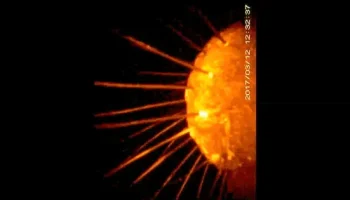What is a space station?
A space station is a form of space habitat that can support a human crew in orbit for an extended length of time. It doesn’t have any significant propulsion or landing systems. An artificial satellite is an orbiting station, often known as an orbital space station.
What is a space station used for?
The International Space Station (ISS) is a massive spaceship in Earth’s orbit. It serves as a residence for astronaut and cosmonaut crew. The space station also serves as a one-of-a-kind scientific laboratory.
Three Chinese astronauts landed at the country’s space station on Sunday, according to China’s space agency for human missions, marking the next step toward Beijing’s goal of becoming a major space power. According to official broadcaster CCTV, the three launched on a Long March-2F rocket from the Jiuquan launch complex in northwest China’s Gobi desert at 0244 GMT.
According to state-run CGTN, the team is entrusted with “completing in-orbit assembly and building of the space station,” as well as “commissioning of equipment” and performing scientific tests. The astronauts boarded the Tiangong station’s core module at 1250 GMT, according to the China Manned Space Agency (CMSA). According to CCTV, the voyage took roughly “seven hours of flight.”
By the end of the year, Tiangong, which means “heavenly palace,” should be completely operating.
China’s well-publicized space program has already resulted in the landing of a rover on Mars and the sending of probes to the Moon.
Chen Dong, a 43-year-old air force pilot, will lead the Shenzhou-14 crew, whose major task will be to connect the station’s two lab modules to the main body. Dong, along with fellow pilots Liu Yang and Cai Xuzhe, will be the second crew to spend six months on the Tiangong after the last crew returned to Earth in April after 183 days on the space station.
Tiangong’s core module was sent into orbit earlier this year and is intended to be operational for at least a decade.
The finished station will resemble the Soviet Mir station, which orbited Earth from the 1980s to 2001.

Space ambitions
The world’s second-largest economy has put billions of dollars into its military-run space program, hoping to have a permanently crewed space station by 2022 and eventually send humans to the Moon.
The country has made significant progress in catching up with the United States and Russia, whose astronauts and cosmonauts have decades of space exploration expertise.
However, under Chinese President Xi Jinping, the country’s preparations for its well publicized “space dream” have been accelerated. Beijing is also intending to develop a base on the Moon, and the country’s National Space Administration has stated that a crewed lunar mission will be launched by 2029.
Since 2011, when the US prevented NASA from working with China, China has been barred from participating in the International Space Station.
While China has stated that it does not intend to utilize its space station for global cooperation on the same scale as the International Space Station, it has stated that it is open to foreign collaboration.
The ISS is scheduled to be decommissioned in 2024, while NASA has said that it might be operational until 2030.





